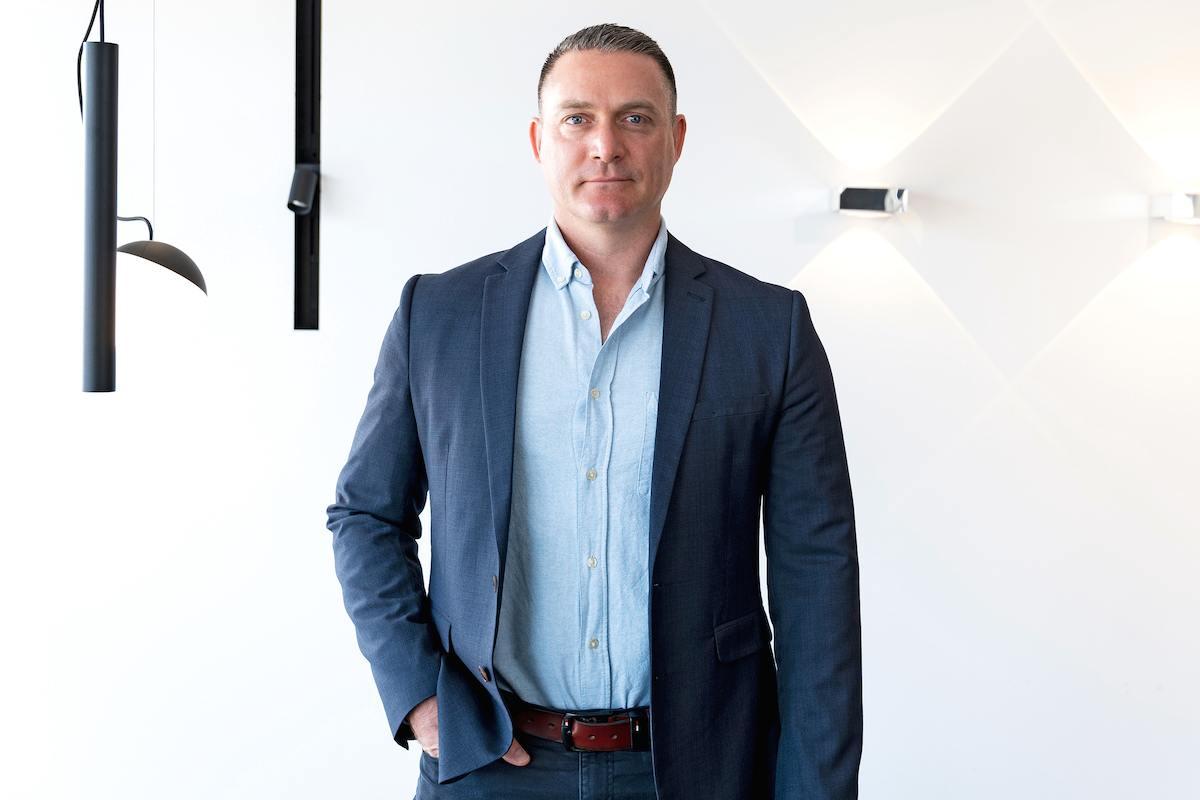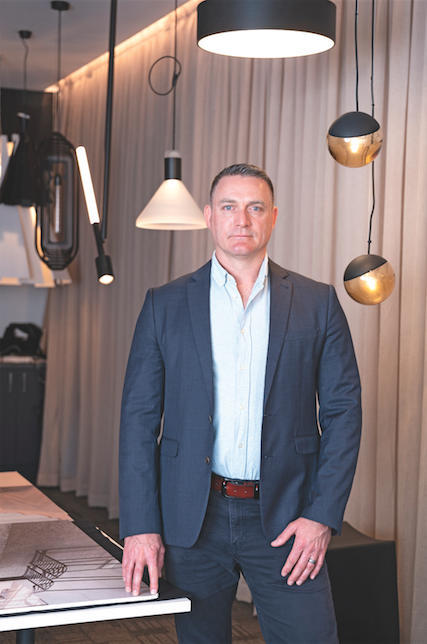Once upon a time, artificial lighting provided enough brightness to see your surroundings. But that’s all changed. Now, lighting technology can control and adjust your nearby environment’s settings to suit any occasion.

Pierlite enjoys a market-leading advantage in Australasia in the design, manufacture and distribution of lighting systems for commercial, industrial and healthcare applications, and Lydell Stokes, General Manager of Future Markets, is more than a little excited by its prospects. Lydell’s role is leading the company’s Future Markets strategy by driving innovative solutions beyond the scope of traditional lighting.
He came to Pierlite in 2019 after spending 25 years working in the architecture, engineering and construction industries. The switch to lighting was a no-brainer, he says.
“I’ve always had a passion for technology and innovation and, like many at Pierlite, I bring a perspective from outside the lighting industry, which has proven to be a key strength and ingredient for our innovation culture,” Lydell tells The CEO Magazine. “Coming from a technology, software and consulting background, I have been able to lead our Future Markets strategy with a unique perspective.
“I was approached by Pierlite CEO Gus Arianto in 2019 to embark on a period of strategic repositioning and transformation. The company was 70 years old, with ingrained silos and often unquestioned practices. I could see that Pierlite possessed the right ingredients: a strong market presence and reputation, engineering capabilities, a focus on product development, a global supply chain with local manufacturing presence, significant market reach and partner channels. It also had loyal, hardworking people.”
We can construct digital models of real-world assets, and partner with clients to optimise designs for lighting, sensors and controls in buildings.– Lydell Stokes
Pierlite has taken those ingredients and stirred vigorously to create its Beyond Light concept for a future of wireless solutions, cloud computing and the Internet of Things.
Lighting is moving away from simply brighter lights using lower wattages to endowing buildings with cloud-based ecosystems that can monitor air quality and organic compounds, create building occupancy heat maps and provide energy use analytics in real time. The company sits at the forefront of this revolution with Beyond Light, and is collaborating with architects, property owners and developers to configure spaces that better satisfy owners’ operational and ongoing maintenance needs.
Its Design on Demand system is a web-based platform that integrates with customer service procurement and manufacturing systems to customise light fittings to their own specifications. “This brings financial benefits, providing Pierlite with supply chain predictability and back-end efficiencies,” Lydell explains.
Brighter in Brisbane
In early 2019, the federal Department of Home Affairs wanted to reduce its energy consumption at its nine-storey Brisbane complex, so it contracted JLL Australia and Pierlite to find a solution. Pierlite and its partner brand, Integrated Outcomes, installed 1,226 Momentum 1 luminaires fitted with smart sensors. The custom-made luminaires were designed, manufactured and delivered in record time, despite tight security and site constraints. The result is a reduction of 155,000 kilowatt hours in energy use, or 65% of the department’s previous usage. The smart sensors enable the tenants to adjust lighting to suit the number of occupants and their varied requirements. “This is a good example of our ability to provide a solution offering space optimisation planning, power savings through effective controls and sensors, and a lighting environment that is conducive to wellbeing and productivity,” Lydell explains. Matt Booth, Electrical Engineer – Energy & Sustainability Services at JLL Australia, agrees. “The luminaires were bespoke, including return air slots, third-party sensor integration and output restrictions,” he says. “The quick turnaround of this bespoke product helped to achieve delivery and installation within the onerous project time frames. The initial feedback from the building occupants has been positive. There has been improvement in lighting levels and distribution, as well as quality.”
“Another key part of our Beyond Light ecosystem is the way we have digitised the refit and refurbishment process for properties using photogrammetry and software modelling. We can construct digital models of real-world assets, and partner with clients to optimise designs for lighting, sensors and controls in buildings.
“This enables developers to walk through projects and buildings virtually prior to finalising design, selecting fittings and simulating product installation and performance. This digital twin model is also used in our Pierlite Connect ecosystem. This new way of working with customers, consultants and contractors is something I’m very excited about.”
Smarter solutions
Pierlite Connect delivers cloud-based systems to combine lighting, sensors and controls so owners and managers can administer a network of IoT functions for optimising lighting, monitoring air quality, building safety, temperature, real-time tracking of occupancy and security systems.
All these functions come complete with smart analytics. The company has a facility in Padstow, Sydney that serves as a technology innovation hub, a headquarters for its Future Markets team and a base for its Beyond Light strategy.

“Managed by Mark Snyman, a lighting industry legend, our Innovation Centre is used for the design, testing and certification of our products,” Lydell shares. “This laboratory is supported by a team of dedicated engineers. It’s not uncommon for our lab to fail fixtures to force design improvements until they are satisfied the standard is high enough.
“We’ll soon have NATA certification as an additional layer of security for our customers covering our photometric, thermal, electrical, physical penetration and water ingress testing for our luminaires and emergency products.”
The COVID-19 pandemic has accentuated the importance of contact tracing, air quality and occupancy measurement for property owners. With Pierlite Connect, owners can embed sensors to heat-map foot traffic hotspots, send contact tracing alerts and monitor air quality via a dashboard.
“Our customers are able to design solutions tailored to their needs using our Design on Demand option and include embedded sensors,” Lydell says. “One solution we are very excited about is a newly developed air-scrubbing light fitting that filters the air by deactivating and removing airborne microorganisms with a 99.8% effectiveness rating.”
People power
However, at the heart of Pierlite’s structure is its people, according to Lydell, which is the underpinning factor that will matter most in the company’s future. “Pierlite must always empower our people to improve on what we do and challenge the status quo by investing in their professional growth,” he says.
“These have lasting effects on our brand and our market. “Technologies come and go. In the lighting industry this happens quickly. Understanding how to continually solve real-world problems and drive innovation – that will leave a legacy.”


